On a sultry morning in September 2020, a team of Turkish officials showed up unannounced at the British Institute at Ankara, tucked on two floors of a five-story office building down the hill from the embassy district. For seven decades, the institute has overseen some of the most important archaeological work in Turkey, including the discovery of one of the world’s first proto-cities: Catalhoyuk, a 9,000-year-old Neolithic settlement on the Anatolian plain. Institute archaeologists have documented the transition from hunting and gathering to farming, a breakthrough that Logan Kistler, an ancient-plant geneticist at the Smithsonian Institution, calls “the most important process in the history of humanity.”
Despite decades of cordial cooperation between the researchers and the Turkish government, the institute has recently come under attack by the authoritarian regime of President Recep Tayyip Erdogan. A pointed threat arose in 2019 when a government statute suddenly declared all seeds and plants collected by foreign organizations to be the property of Turkey. That jeopardized the institute’s unique collection of ancient grains gathered decades ago from Anatolian sites. These charred organic materials have mainly been of interest to paleobotany scholars, who trickle into the institute to compare them with modern strains, and thus better understand early varieties of wheat, rye and other domesticated grains.

But Ibrahim Saracoglu, a Turkish TV personality and Austrian-educated chemist who has earned legions of fans by promoting broccoli as a cure for prostatitis, among other questionable treatments, argues that the ancient seeds are not only critical to the nation’s history but also have enormous medicinal and agricultural potential. Saracoglu is the chief adviser to Turkey’s Ancestral Seed Project, founded by first lady Emine Erdogan, which promises to revolutionize agriculture by, in Erdogan’s words, reviving seeds from the “most ancient geography in the world.” The long-defunct crops of their Neolithic ancestors, Erdogan and Saracoglu suggest, contain a road map to creating a new generation of superfoods: nutritious and disease- and drought-resistant grains that might reduce famine and help people live longer, healthier lives. “Revive the ancestral seeds that are about to be lost,” the first lady recently urged.
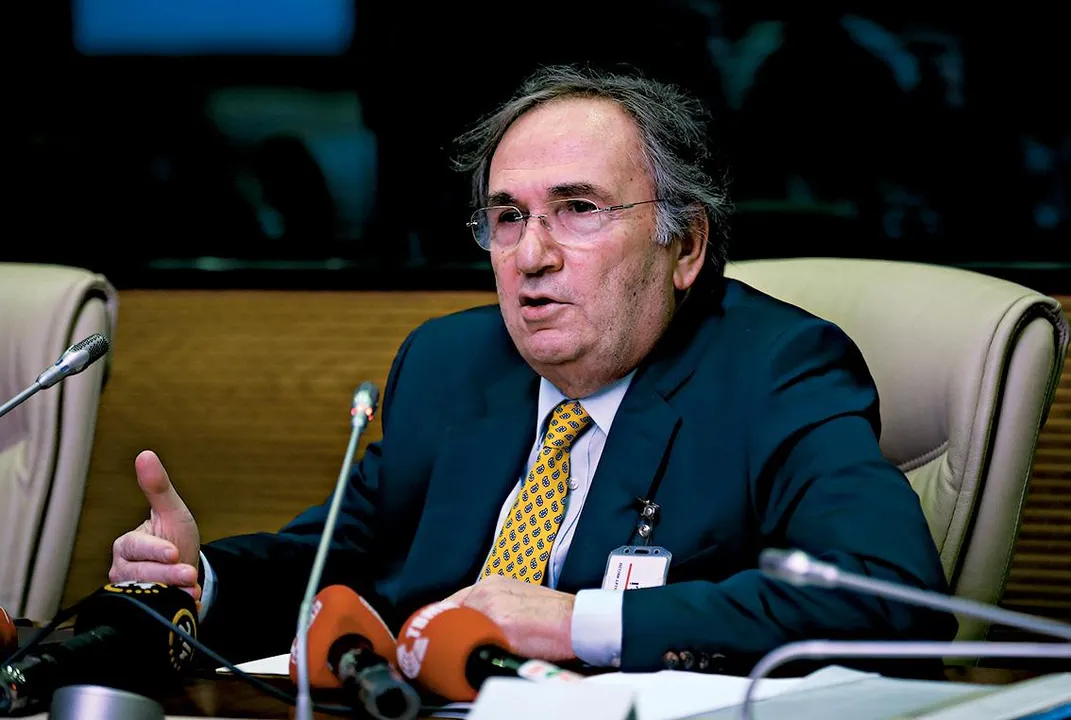
Saracoglu was among the officials who barged into the British Institute’s offices, where a couple of dozen Turkish and British staff members spend their days supervising archaeological digs, as well as overseeing cultural programs that celebrate Turkey’s ancient past, including a walking trail that cuts across the Taurus Mountains in west-central Anatolia. The officials informed the director, a low-key Belgian archaeologist named Lutgarde Vandeput, that they were taking possession of the Hillman seed collection, named after an Englishman who began his collecting in Turkey in 1969. Vandeput objected. By a longstanding agreement with Turkey’s Ministry of Culture and Tourism, she pointed out, the institute served as the collection’s custodian. Perhaps they could agree to share the resource. Would they settle for one-third? One-half? The Turks left the institute without reaching an agreement. Three days later, however, they returned. This time, as Vandeput watched in dismay, they removed 108 boxes of archaeological specimens and four cupboards comprising the modern seed collection, loaded them into vans and drove away.
* * *
The raid on the British Institute shook the world of archaeology. Some Western scientists and their allies called it a display of nationalistic muscle-flexing designed to enhance Erdogan’s popularity—much like the July 2020 presidential decree that made Hagia Sophia, the Byzantine cathedral-turned-museum in Istanbul, a mosque. And indeed, many Turks applauded the seizure, seeing it as a victory in the battle for the proprietary rights to a country’s own heritage. “We took it back from the English!” declared the headline in the newspaper Haber. “Seeds and plants are state property, and are as important as an underground sarcophagus or an inscription,” opined the daily Onedio. Turkey’s tightly controlled press rushed to interview Saracoglu, who whipped up resentments against the British by accusing them of plundering Turkey’s heritage. “Is Austria authorized to collect plants in Switzerland or Germany? Britain should know that it cannot collect every plant that comes to it. They do not have our permission.”
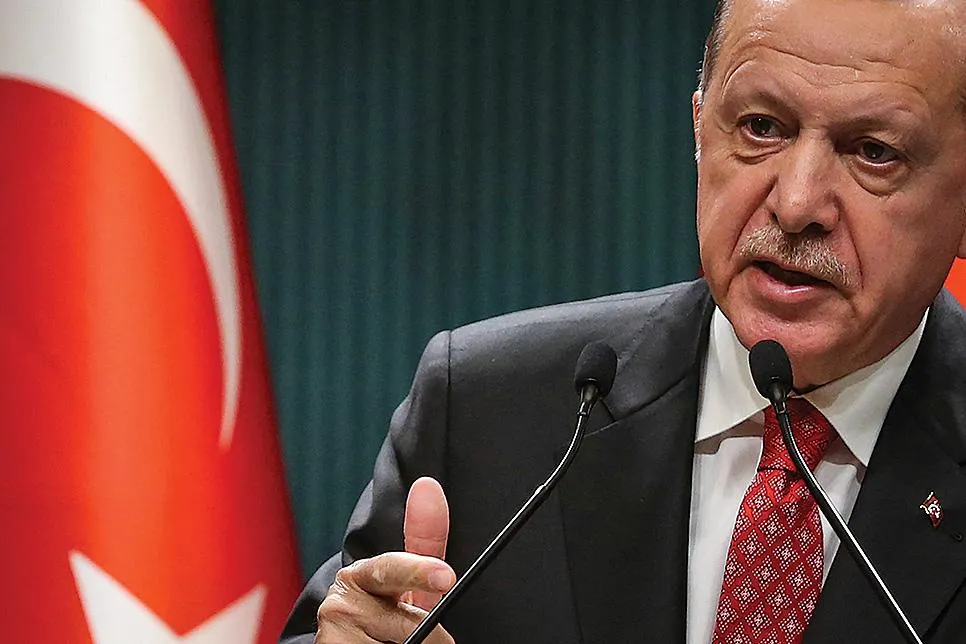
He ridiculed the British Institute’s attempts to compromise. “They say, ‘Let’s share one-third,’ but we do not divide,’” he declared in a TV interview. “This is the property of the great Turkish nation. These are priceless seeds. Do you think you read ‘stupid’ on our foreheads?”
The raid was a dramatic turning point in a love-hate relationship that has existed between the Turkish government and British archaeologists since the early 1950s, when a young Englishman named James Mellaart arrived in Turkey and put the country on the archaeological map. A graduate in Egyptology from University College London, Mellaart dreamed of digging up an ancient city that would make him as famous as Heinrich Schliemann, the German businessman-archaeologist who had unearthed Troy in the 1870s. Pursuing a hunch that civilization had begun not only in the Levant and the Fertile Crescent but also in Anatolia, Mellaart in November 1958 targeted a huge mound on the Konya Plain—and soon excavated 150 rooms and buildings, many of them decorated with murals, reliefs and sculptures. Spread out over 32.5 acres, Catalhoyuk was determined to have had a peak population of about 8,000 and was one of the earliest human settlements ever uncovered. It provided a window into pre-Bronze Age religion and art, and the epochal transition from a nomadic to a sedentary lifestyle. “This was huge, and what it did was to give Turkey a past, which went back further than anybody had imagined before,” says Stephen Mitchell, the Berlin-based chairman of the British Institute at Ankara, which sponsored Mellaart’s excavations.
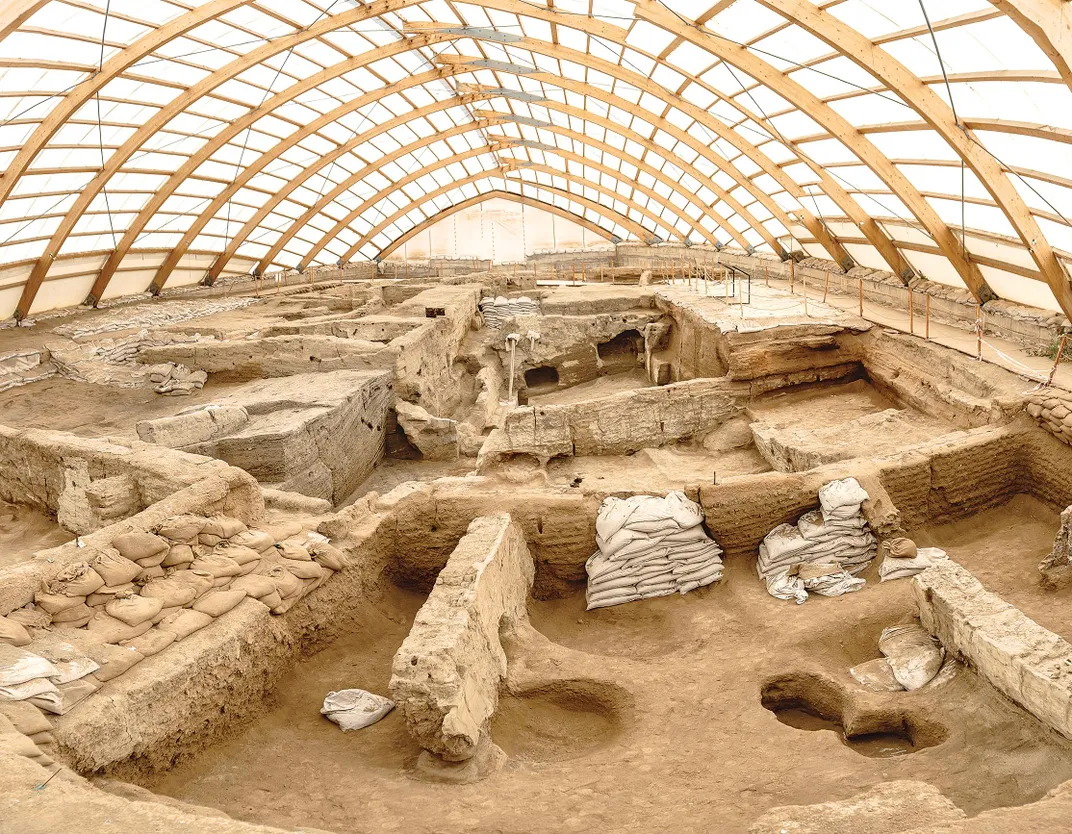
Then came Mellaart’s downfall. In 1958, just as the Catalhoyuk discovery was making headlines, the archaeologist announced an equally spectacular find. During a train ride taken from Istanbul to Izmir, he had noticed that the young woman sitting across from him was wearing a striking gold armband. She had invited him back to her home in Izmir, Mellaart claimed, where she permitted him to sketch—but not photograph—an array of treasures, including ceremonial axes, marble figurines and gold ornaments. Mellaart said she told him that the artifacts had been looted from the tombs of a long vanished “Sea People” near the city of Dorak, south of the Sea of Marmara.
Mellaart’s article about the find, published in the Illustrated News of London and accompanied by his drawings, caused a sensation. But he couldn’t back up his fantastic tale with photos. Mellaart always insisted that he’d been truthful, but many colleagues are convinced that the attention-seeking archaeologist had manufactured the entire episode. The Turkish press, on the other hand, accused him of stealing the country’s patrimony and smuggling the cache of precious artifacts to England for a take that they claimed was in the tens of millions of dollars. The Turkish government banned Mellaart from working in the country and in 1964 shut down Catalhoyuk for a generation. The reputation of the British Institute was badly tarnished. Mellaart was “a fantastically lucky archaeologist,” Mitchell says. But he was also “a fantasist. He made stuff up.” And though the fraud scandal is decades old, “it’s a fact of life if you work in Turkey.”

* * *
For all his deceit and disgrace, Mellaart made discoveries that led to an explosion of archaeological interest in the region, and gave a lift to the emerging science of paleobotany. A once-obscure area of research, the discipline has taken on more importance as archaeology has become more holistic—analyzing not just physical artifacts but also attempting to encompass a wider range of ancient human experience, including diet, domestication of animals, use of medicinal plants, fire-building and so on. Paleobotanists have enriched understanding of Greco-Roman society by revealing that ancient Neapolitan seafarers brought aboard their galleys dried fruits, walnuts and chestnuts, valued for their imperishability and high energy content. DNA research on 2.5 million-year-old peach stones in China suggests the fruit was a favorite of early Asian hominids and evolved through natural selection before being domesticated.
In 1969, Gordon Hillman, a seed merchant’s son from Sussex, England, who studied agricultural botany at Reading University and archaeobotany in Mainz, Germany, went to Turkey under the institute’s auspices. He joined an excavation project at Asvan, a village that was about to be swallowed up by a hydroelectric dam. Hillman sifted through ancient hearths, using river water to separate carbonized seeds from archaeological sediments. He also spent months with local farmers, observing their age-old planting and harvesting techniques. Hillman came up with new theories about how Neolithic man foraged ancient wild wheat, barley and other grains and eventually learned to domesticate these wild strains. The grains changed over time as they adapted to the uses and environments people subjected them to—developing tougher husks, for example, to make them suitable for threshing. “He gave his life to the field, and much of his work has withstood the test of time,“ says Ian Hodder, who succeeded Mellaart as chief archaeologist at Catalhoyuk in the 1990s.
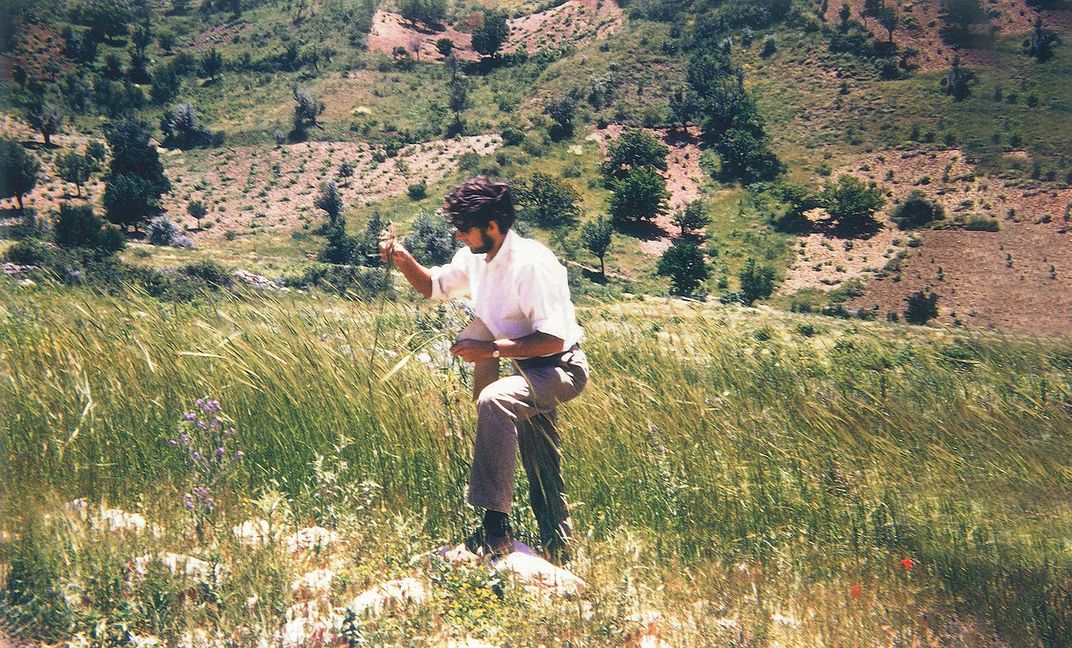
Hillman became best known for his seed collection, which allowed two generations of scholars to gain insight into ancient farming. Between 1969 and 1975, Hillman gathered carbonized grains at the Neolithic settlements of Asvan and Can Hasan, and also retrieved modern seeds—both wild and domesticated—in surrounding villages and in the countryside. He picked up samples in fragile environments that no longer exist, plucking wild emmer and einkorn wheat, for example, in a region of lakes, swamps and meadows in the southeast Konya Plain that have since dried up and disappeared. The vast variety of seeds he gathered presented a near-complete picture of ancient diets in Anatolia. They also contained, in the minds of some Turkish scientists, at least, the promise of a food revolution.
* * *
The Turks carried the Hillman collection to vaults in two museums in Ankara, where, presumably, they will soon be turned over to the Ancestral Seed Project. No scholar I spoke with knows what will happen to the specimens. Speeches by Erdogan and Saracoglu suggest that scientists will try to regenerate the ancient seeds in an effort to extract information, though those were burned thousands of years ago. The thinking is that the ancient grains might be more healthful than modern ones, perhaps containing less gluten and other hard-to-digest protein. Moreover, the Turkish officials believe the ancient seeds might harbor genes for traits that have been lost to modern agribusiness and its monocultures and cloned crops.
Agronomy that focuses on favoring certain traits has produced higher yields, to be sure, but it has also made crops more vulnerable to diseases. In the 1840s, Europeans brought back a few varieties of potatoes from the Americas and based a huge part of their food economy on the tubers. Then a fungal-like parasite came along, and started rotting the roots. The entire crop was destroyed, and the Irish potato famine was the result. A deadly fungus that has decimated banana plantations in Southeast Asia for 30 years recently migrated to Latin America—the heart of the banana export market. A single strain of the fruit, known as the Cavendish banana, which can be shipped long distances and stay green, accounts for two-thirds of global exports, and has proven to be defenseless against the rot. Farmers have bred shorter wheat plants, with more grains and less chaff, so they can be easily threshed by a machine—but this has significantly reduced wheat varieties, and made the staple vulnerable as well.
Yet scientists have serious doubts about the Turkish officials’ hopes of reviving the Neolithic-era seed material. “The ancient seeds are shriveled, carbonized bits of black stuff; they’re not going to send up green shoots,” Mitchell says. “It sounds like Steven Spielberg to me.”
That’s not to say that reviving ancient seeds is an impossible dream. Plant geneticists have roamed the globe in recent years, bringing back to their laboratories 5,000- year-old maize from a cave in Mexico, ancient sorghum from Nubia in southern Egypt, and Bronze Age rice from the western province of Xinjiang in China. Unlike the charred, lifeless lumps in the Hillman collection, these antique strains—saved from decay by dessicated conditions—often bear intact genomes and stand a good chance of being revived. Thirteen years ago, Israeli scientists succeeded in germinating the 1,900-year-old seed of a Judean date palm (Phoenix dactylifera)—one of the earliest domesticated fruit crops, praised by the ancients for its sweet taste and medicinal properties—from Herod’s Great Palace overlooking the Dead Sea. The palm seed’s germplasm—its living tissue that can breed new life—had survived two millennia in the Negev Desert, and became reanimated after treatment in a fertilizer- and hormone-rich solution. The seed produced a male date palm known as “the Methuselah tree,” which was making pollen and has grown today to a height of more than 11 feet.
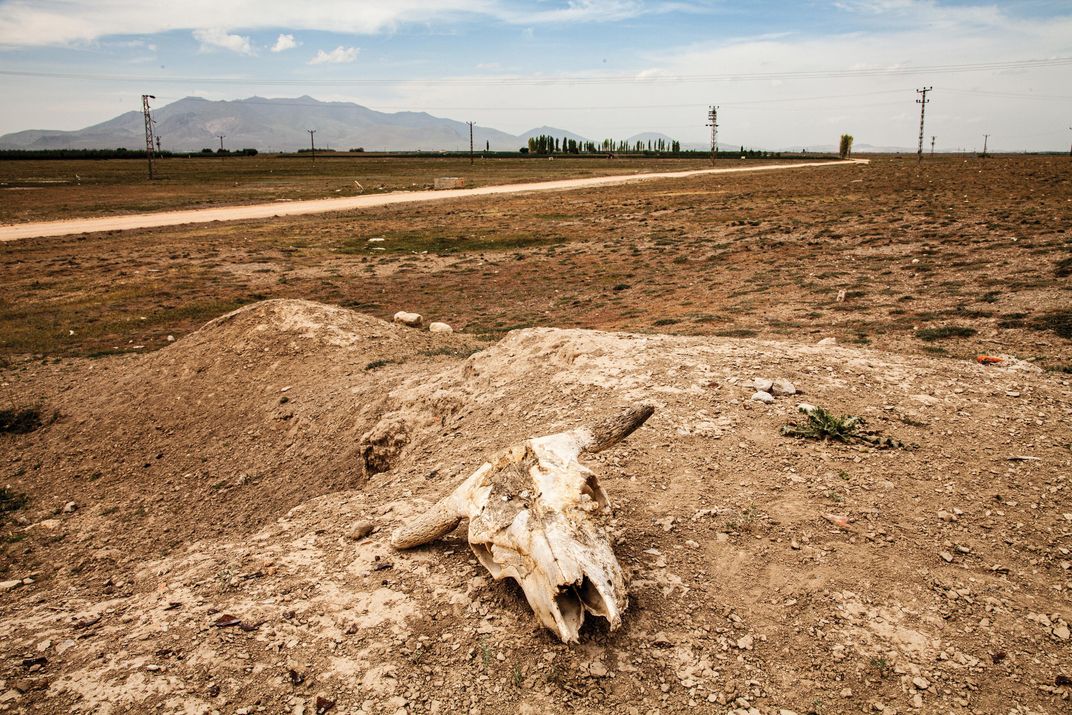
Some scientists believe that there may be ways to extract usable DNA from the carbonized matter in which the germplasms died long ago. Using genomic sequencing and gene editing tools like Crispr (the technology used in developing Covid-19 vaccines), researchers have begun to insert fragments of genetic information into seeds to create new types. Scientists recently used gene therapy to create a domesticated version of the ground cherry (Physalis pruinosa)—a tasty yellow berry that grows in the wild. The wild cherries drop to the ground and scatter their seeds in order to ensure survival of their species. Using Crispr, scientists introduced genes from the tomato—a relative of the ground cherry—to create more compact plants and larger fruits that hang on the vines rather than drop to the ground as they ripen, making them easy to harvest. Replicating the process using gene fragments extracted from carbonized chunks will be harder but perhaps not impossible. “We can sequence the gene, just like we can sequence a woolly mammoth, but it doesn’t mean we can remake the ancient maize,” says Kistler.
Hillman’s collection also contained live, recent seeds, also potentially useful to Turkish plant geneticists. Most were “landraces,” traditional crops grown in isolation over the centuries, collected from Anatolian farmers. “Saving the lineages of extant landraces for their variety is an incredibly important component of maintaining biodiversity,” says Kistler.
The prospect of creating new plant types excites Saracoglu, of the Ancestral Seed Project. “If your ancestor seed is the Canakkale tomato, then you can cross it with a Kilis tomato, and create a whole new variety,” he said in a recent interview. “If you are lucky, maybe it will be very high quality. In the future, hunger will envelop the world. There is no escape.” Creating entirely new varieties of crops, he added, “is such a bonus, you can’t measure its value in dollars.”
* * *
Back at the British Institute at Ankara, the shell-shocked staff continues to deal with the fallout from the government’s seizure. To be sure, some Turks rushed to the institute’s defense.
Aylin Oney Tan, a Turkish journalist and plant expert based in Istanbul, was shocked by the aggressive tactics and belligerent tone displayed by Saracoglu and his team. “The way it was done was rude. They could have been more smooth and diplomatic,” she says. Many Turkish scholars and scientists, she says, “were outraged.”
But two rounds of media attacks in late 2020, apparently orchestrated by Saracoglu, have put researchers on edge, leaving them to worry that the government might shut down the entire institution. The newspaper Haber quoted Saracoglu’s diatribes at length: “They didn’t want to give it [the seeds] to us at first, but we said, ‘Look, you are breaking the law,’ and we finally got them.” The situation “is unpredictable and difficult to live with,” says Vandeput.
Mitchell, monitoring the episode from his home in Berlin, says that Turkey’s power play was bound to happen at some point. “When I first went to Turkey, it was a tiny speck in the world. Now it’s a middle-sized world power, with all of that consequence,” Mitchell says. “Our relationship has changed.”
Likewise, Hodder says Turkey is responding to the historic tendency of British and American archaeology authorities to “treat the Middle East as a playground to discover our origins. And I do feel culpable in that sense. I feel that that’s a negative.” He describes the West’s attitude as “a form of Orientalism,” using a term popularized by the late Arab-American academic Edward Said that connotes paternalism and exploitation.
So was the confiscation justified? It’s true that the seizure, carried out with little warning, was clumsy and bullying, but it also reflected a growing push around the globe for reclaiming cultural patrimony. The Turkish move was not so different from the efforts made by Peru, Egypt and other nations to bring back cultural artifacts seized by 19th- and 20th-century European and American archaeologists and adventurers; it just takes that clash into a new arena and gives it a 21st-century spin.
There’s also the question of the scientific value of this seed bank. Saracoglu has a reputation for medical quackery, and his hope to breathe new life into dead material seems to verge on Dr. Frankenstein-style pseudoscience. The raid on the institute and Saracoglu’s pronouncements afterward smacked of resentment and political one-upmanship. But the goals espoused by him and Turkey’s first lady—creating more nutritious foods and eliminating hunger—are worthy ones. And it may well be that an aggressive effort to exploit the British collection could work toward that. To date, however, the Turks have shown no signs of building a lab to regenerate the seeds, and Saracoglu’s comments sound more like gloating than scientific seriousness.
For now, says Vandeput, the only possible strategy is to hunker down and hope to survive the barrage of negative attention. Today, the atmosphere “is even more sensitive than in a porcelain shop,” she says. “Our feeling of security is completely gone.”
:focal(280x547:281x548)/https://tf-cmsv2-smithsonianmag-media.s3.amazonaws.com/filer_public/02/99/02992a52-99ad-4d4c-80c7-a3000ff2e9a2/chuck-two-turkish-farmers.jpg)
/https://tf-cmsv2-smithsonianmag-media.s3.amazonaws.com/accounts/headshot/Screen_Shot_2021-09-15_at_12.44.05_PM.png)
/https://tf-cmsv2-smithsonianmag-media.s3.amazonaws.com/accounts/headshot/Screen_Shot_2021-09-15_at_12.44.05_PM.png)